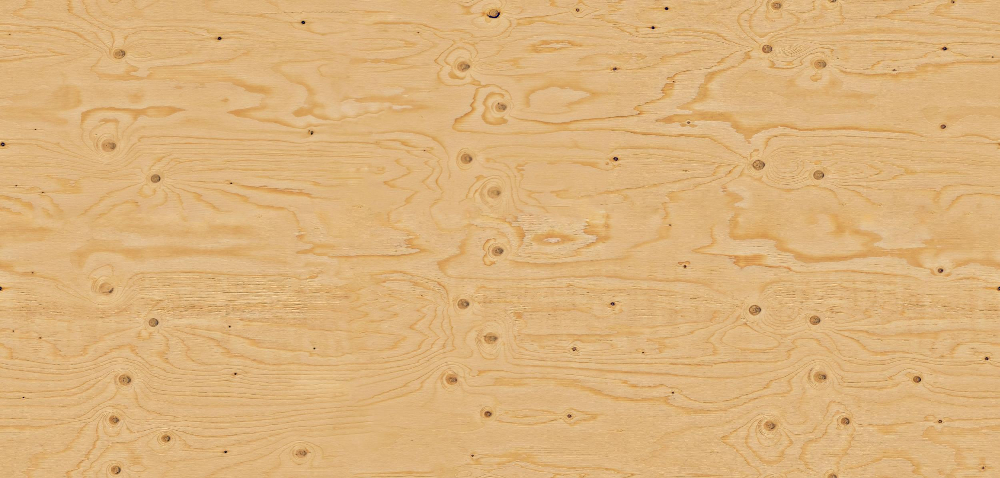Softwood Plywood
Category
Wood
Download
Edit
Plywood is a commonly used structural panel material in the construction industry. It is comprised of thin sheets of timber pressed together, making for excellent strength and solidity, ideal for cabinets and furniture while remaining cheaper than solid, ‘real’ wood pieces. Plywood’s low cost and versatility lends itself to specification on projects which anticipate lots of change and are required to be adaptable for multiple or evolving uses, such as temporary structures, dividing walls in flexible/shared office spaces, seating and stands in exhibitions and low-cost, industrial looking fit-outs and conversions for hospitality and workplace settings. Higher-end, more expensive plywoods such as this have a veneer finishing layer which is comprised of thin sawn, cut or peeled strips from a tree’s trunk which, when layered together can form highly unique patterns.
Traditionally, veneer was more expensive than standard sawn timber as it required a high level of skill to cut and layer fine strips of the timber. Modern methods of manufacturing are able to replicate these techniques and reproduce patterns quickly and economically. Due to the nature of the different cuts of timber, it was previously impossible to have the same pattern repeated on each sheet of veneer. With contemporary processes, the unique patterns can be replicated manually, or digitally scanned and etched into synthetic panels, allowing patterns to be repeated consistently across surfaces on veneer effect panels. The more effective modern production methods have significantly reduced the cost of veneer timber, although real-sawn timber veneers are still relatively expensive due to the time intensive nature of cutting and layering individual strips. It was a popular material for furniture in the 1960s and 70s, although laterally it has been used more in light structural elements from plywood to framing due to its robust nature. Veneer finishes are also still utilised on cabinets, doors, furniture, storage crates, flooring, wall panelling, musical instruments, crockery, tools and utensils.
A strong, stable, hard-wearing, durable timber, this veneer is aesthetically pleasing and possesses a knotted grain with darker, burnt orange-brown growth rings standing out against the warm, pastel pinky-beige tined yellow wash of the sapwood, typical of pine, a commonly used softwood in construction and decorative finishes due to its reliability, commonality, commercial viability in regards to its quick growth from planting to maturity, and its renowned warm, consistent, smooth tones and finish. The wood is slightly riven and textured, with areas of dry, grainy streaks, adding some variety and honesty to the otherwise visually perfectly smooth surface. Perfect for worktops, furniture, door, wall panelling and floor finishes, pine is synonymous with Scandinavian design aesthetics, used to create bright, calm, homely atmospheres, which emphasise the quality of light, with a clear connection to nature and promoting a biophilic effect through its natural grain patterns, while possessing a softer feel than other timbers. This therefore makes it a popular choice is domestic applications, as well as environments which aim to promote a sense of tranquility, ease and relaxation such as health centres, schools, wellbeing facilities and hospitality settings. Plywood is manufactured by laying thin sheets of timber together to create a robust, stable and strong panel or sheet for walls, ceilings and floors, while its thickness and strength are particularly effective for creating worktops, cabinets and furniture for warm, welcoming environments. Plywood veneers or sheets also respond well to steam bending as they are thin and light, meaning they can be employed on a much wider range of architectural and cabinetry or furniture projects than most solid, ‘real’ timbers.
A seamless wood texture with a softwood plywood surface. Seamless textures can be tiled repeatedly across a surface without visible seams making them useful for architectural drawings and 3D models. This image can be used as a SketchUp texture, Revit material or imported into Photoshop for use in 2D illustrations. A high resolution version of this texture is available, as well as CAD hatches and PBR maps with Architextures Pro.

